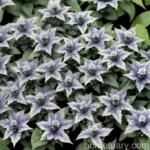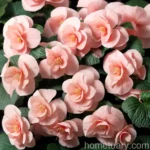The Amazing Hardy Rubber Tree (Eucommia ulmoides)
The hardy rubber tree, scientifically known as Eucommia ulmoides, is a resilient and versatile plant that offers numerous benefits to gardeners, herbalists, and landscapers. This article delves deep into the various facets of this remarkable tree, including its characteristics, cultivation, uses, and maintenance. If you have ever been intrigued by the possibility of incorporating Eucommia ulmoides into your outdoor or indoor green spaces, or if you are interested in its medicinal properties, then this comprehensive guide is for you.
What is the Hardy Rubber Tree (Eucommia ulmoides)?
Eucommia ulmoides, commonly known as the hardy rubber tree, is a deciduous tree native to China. It belongs to the family Eucommiaceae and is the only extant species in its genus. The tree holds historical and cultural significance in Chinese traditional medicine, where various parts of the Eucommia ulmoides tree, such as the bark and leaves, have been used for their medicinal properties for centuries.
Key Takeaways – Hardy Rubber Tree (Eucommia ulmoides)
- Scientific Name: Eucommia ulmoides
- Family: Eucommiaceae
- Native to: China
- Significance: Traditional Chinese medicine
- Uses: Medicinal, ornamental, landscaping
- Attributes: Resilient, hardy, versatile
- Common Name: Hardy rubber tree
Now, let’s explore the various aspects of cultivating and caring for the hardy rubber tree.
Culture
The cultivation of Eucommia ulmoides involves understanding its specific requirements relating to water, sunlight, soil, and fertilizer. Along with nurturing the tree for its growth and well-being, it is also essential to comprehend its potential uses, such as in traditional medicine and as an ornamental plant.
Uses
Eucommia ulmoides holds various uses, making it a valuable addition to diverse settings. These uses include:
– Medicinal applications: The bark and leaves of the hardy rubber tree contain compounds with medicinal properties.
– Ornamental uses: The tree’s attractive foliage and unique characteristics make it an appealing choice for landscaping and ornamental planting.
Next, let’s explore the specific cultural requirements for successfully growing and maintaining Eucommia ulmoides.
Water
Proper watering is essential for the health and vitality of the hardy rubber tree. Understanding the tree’s water requirements is crucial for ensuring its well-being.
Sunlight
Eucommia ulmoides thrives in specific light conditions. Providing the right amount of sunlight is vital for its growth and development.
Fertilizer
Fertilizing the hardy rubber tree is an integral part of its care routine. By understanding the tree’s fertilizer needs, you can support its overall health and vigor.
Soil
The type of soil in which Eucommia ulmoides is planted can significantly influence its growth and resilience. Understanding the optimal soil conditions for the tree is crucial for successful cultivation.
Pruning
Pruning is an essential aspect of maintaining the hardy rubber tree’s form and structure. Proper pruning techniques contribute to the tree’s overall health and appearance.
Propagation
Understanding the methods of propagating Eucommia ulmoides can enable individuals to expand their plant populations and share the benefits of this remarkable tree with others.
Container Popularity
The hardy rubber tree is also a popular choice for container planting. Its adaptability to container growth makes it an attractive option for various settings, from urban environments to traditional gardens.
Common Diseases
As with any plant, Eucommia ulmoides is susceptible to certain diseases. Recognizing and understanding these diseases is vital for effectively managing and preserving the tree’s health.
Disease Diagnosis
Diagnosing and identifying diseases in the hardy rubber tree is critical for implementing timely and appropriate treatments.
Common Pests
Like other plants, Eucommia ulmoides can fall victim to pests. Awareness of common pests and their management is essential for protecting the tree from potential damage.
Botanist’s Tips
Insights from botanists and plant scientists can provide valuable guidance for successfully cultivating and caring for Eucommia ulmoides.
Fun Facts
Discover some fascinating and little-known facts about the hardy rubber tree that showcase its unique characteristics and historical significance.
Links to External Resources
Explore additional information and resources related to Eucommia ulmoides, including research studies, expert insights, and organizations dedicated to the study and cultivation of this remarkable tree.
Conclusion
The hardy rubber tree (Eucommia ulmoides) is an exceptional plant with a rich history and diverse potential uses. Whether for its traditional medicinal applications, ornamental beauty, or landscaping versatility, Eucommia ulmoides has much to offer to enthusiasts and professionals alike. By understanding its cultural requirements, including specific considerations for water, sunlight, fertilization, and soil, individuals can successfully cultivate and maintain this remarkable tree. Additionally, awareness of common diseases and pests, along with proper pruning and propagation techniques, can contribute to the health and vitality of Eucommia ulmoides. As interest in sustainable gardening, natural medicine, and ornamental landscaping continues to grow, the hardy rubber tree stands as a testament to the enduring significance of plants in human culture and well-being.
In the end, Eucommia ulmoides represents not only a beautiful and resilient tree but also a bridge between traditional wisdom and modern applications, harmonizing the past and the present in the cultivation and appreciation of nature’s gifts.
References
- “Eucommia ulmoides: an underutilized tree with multiple uses,” ResearchGate
- “Cultivation, phytochemistry, pharmacology and utilization of Eucommia ulmoides Oliver,” PubMed
- “Traditional uses, phytochemistry and pharmacological properties of the genus Eucommia (sourced from Eucommia ulmoides): A comprehensive review,” PubMed
- “A Comprehensive Review on Phytochemistry, Pharmacology and Flavonoid Biosynthesis of the Genus Eucommia,” PubMed
By [Author’s Name]















